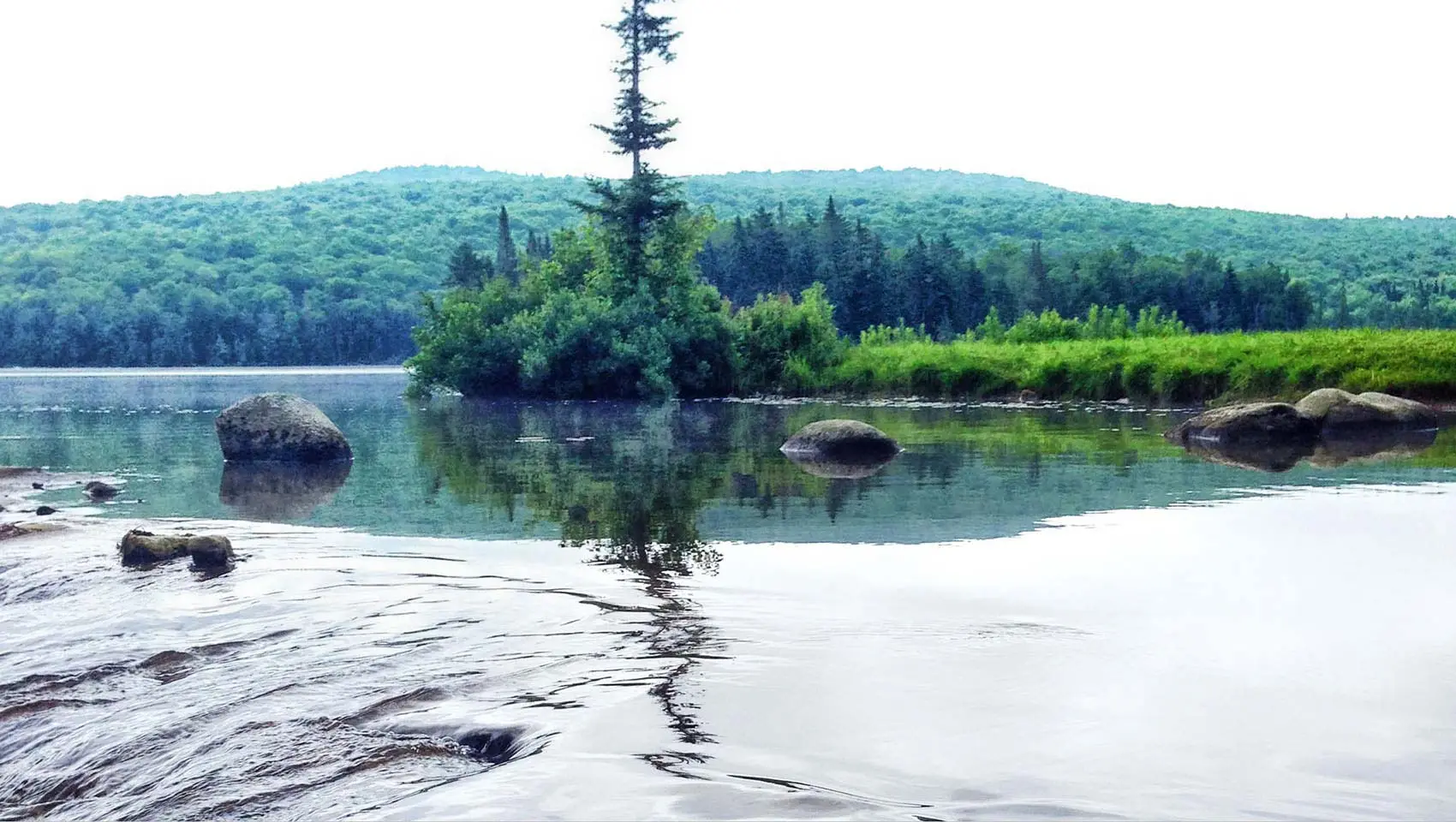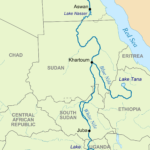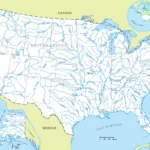Prepare to be amazed as we venture into the world of rivers that flow against the grain, defying the norm by heading northward. These enigmatic waterways, like the legendary Nile and the mysterious St. Johns River, challenge our geographical assumptions. As we unravel the secrets behind their unconventional behavior, we’ll uncover the fascinating interplay of topography, geology, and climate that shapes their course. These rivers face unique challenges and nurture remarkable ecosystems. Embark on this extraordinary journey as we explore the uncharted waters of northward-flowing rivers, revealing a captivating phenomenon that reshapes our understanding of Earth’s water systems.
What Are the Rivers That Flow North?
Ever heard the saying, “water always finds its level”? It’s true! Rivers are always searching for the easiest path downhill, even if it means heading north on a map. We often think of rivers flowing south, but the truth is, plenty of them chart their own course northward.
Take the Nile River, for example. This legendary waterway, stretching over 4,100 miles, is the world’s longest river flowing north. It begins its journey in the mountains of Burundi and meanders all the way to the Mediterranean Sea.
But you don’t have to travel to Africa to find a north-flowing river. The United States boasts at least 48 rivers across 16 states that defy the southward trend. The Red River, cutting through the south-central US, and Florida’s St. Johns River, are just two examples of these unique waterways.
Interestingly, South America takes the crown for having the most rivers that flow north. This phenomenon is all thanks to the mighty Andes Mountains. These towering peaks run north-south along the continent’s western edge, acting like a giant wall that redirects rivers northward.
The mighty Ob, Lena, and Yenisey Rivers, all located in Russia, also make the list of noteworthy rivers that flow north. They demonstrate that across the globe, rivers carve their paths in unexpected and fascinating ways.
Can you think of learning about the direction of the Nile River and the Mississippi River? Well, we have the answer for you right here! You can also unveil the fascinating details of the rivers in the United States that dare to flow north!
Debunking the Myth: Rivers That Defy the Equator
You know how we always think of rivers flowing south, like they’re drawn to the Equator? Turns out, it’s not always the case! Plenty of rivers zig-zag north, proving that geography can be full of surprises. They do this because the lay of the land, like mountains and valleys, matters more than that imaginary line around the middle of the Earth.
Think of it like this: water always wants to go downhill, thanks to gravity. So, a river starting high up in the mountains might actually be flowing away from the Equator, even if it’s headed north. It’s all about finding the easiest path downhill!
And it’s not just a few small streams, either. Some of the world’s most famous rivers, like the mighty Nile, flow north! That’s right, the Nile starts in the heart of Africa and snakes its way north for thousands of miles, eventually emptying into the Mediterranean Sea.
These northward-flowing rivers are more than just cool trivia, though. They teach us that the Earth’s surface is incredibly complex, shaped by forces that go way beyond just the pull of the Equator. Studying them helps us understand how water moves around our planet, which is super important for everything from predicting floods to managing our water resources.
North-Flowing Rivers: A Global Phenomenon Explained
We often picture rivers lazily winding their way south, but what about those that dare to flow against the grain? You might be surprised to learn that north-flowing rivers are more common than you think!
It’s All Downhill From Here
Forget about hemispheres for a moment. The real boss when it comes to a river’s direction is gravity. Just like a ball rolling down a hill, water always seeks the lowest point, regardless of compass direction. It’s the lay of the land, the hills and valleys, that truly dictate where a river flows.
The Nile: A Rebel with a Cause
The mighty Nile, a river steeped in history and wonder, stands as a prime example. Originating in the heart of Africa, it defiantly charts a northward course, carving its way through deserts and ancient civilizations before finally spilling into the Mediterranean Sea. And the Nile is not alone in its northward journey.
A Global Family of Northward Waterways
Across the globe, other rivers also challenge our assumptions. Take the mighty Ob, Lena, and Yenisey rivers, giants that snake their way across the vast expanse of Siberia. Even in North America, we find the St. Johns River in Florida nonchalantly meandering northward. These rivers, each with its unique character, remind us that nature loves to break the mold.
Shaping a River’s Path: A Symphony of Forces
So, how do these rivers end up flowing north? It’s a fascinating interplay of factors. The shape of the land, the mountains and valleys, acts as a guiding hand. Then you have the types of rocks and soil, influencing how the water carves its path. Finally, climate, with its patterns of rain and snow, plays a crucial role in determining the river’s volume and strength.
From the Amazon to the Rhine: Northward Bound
The phenomenon of north-flowing rivers isn’t confined to just a few regions. South America boasts an impressive roster, including the Amazon, the Orinoco, and the Paraná, all giants in their own right. Europe has its share too, with the Rhine and Danube making their way northward. It’s a global tapestry of waterways defying expectations.
Embracing Nature’s Surprises
North-flowing rivers serve as a powerful reminder that nature rarely sticks to a rigid script. They showcase the incredible diversity and complexity of our planet’s water systems. These rivers, flowing against the expected grain, invite us to appreciate the intricate dance between water, land, and climate, a dance that creates some of nature’s most captivating wonders.
Against the Current: Exploring the World’s Northward-Flowing Rivers
So, we’ve talked about how gravity usually pulls rivers downhill, right? But nature loves to throw curveballs! Some rivers actually flow north, defying what we might expect. These rivers give us a peek into the amazing teamwork of gravity, the land itself, and even the Earth’s spin.
The Nile: A North-Flowing Superstar
Take the Nile River, for example. It’s the longest river in the world, and guess what? It flows north! Starting high up in the mountains of Africa, the Nile takes a long journey northward, passing through all sorts of landscapes and historical places. The fact that it can flow “uphill” shows just how powerful these other forces can be.
The Earth’s Spin: It’s Not Just About Day and Night!
There’s this thing called the Coriolis Effect. It’s caused by the Earth spinning, and it doesn’t just affect the direction the sun rises and sets! In the Northern Hemisphere, the Coriolis Effect makes things like wind and water veer slightly to the right as they move. Think of it like gently nudging something as it rolls across a table – it changes the path. This nudge can be enough to make some rivers flow northward, even though gravity is pulling south.
Mountains and Valleys: Nature’s River Guides
Imagine a river flowing through a landscape. Mountains and valleys act like natural walls and channels, influencing where the river can go. Sometimes, the land is shaped in a way that encourages a northward flow, even if it’s a bit uphill. It’s like the land itself is giving the river a gentle push in that direction!
Learning From the Unexpected
Northward-flowing rivers remind us that our planet is full of surprises. They challenge what we think we know about how rivers work. By studying these unusual rivers, we learn more about how water moves around our planet and how interconnected everything is. It’s a reminder that the Earth is a dynamic and ever-changing place, always full of amazing things to discover!
FAQ
Q1: Do rivers typically flow north?
A1: No, most rivers do not flow north. In the Northern Hemisphere, most rivers flow in a southerly direction due to the Coriolis Effect. However, northerly flowing rivers do exist in different parts of the world.
Q2: What are some examples of northward-flowing rivers?
A2: The Nile River, the world’s longest river, is a well-known example of a northward-flowing river. Other examples include the Ob, Lena, and Yenisey Rivers in Russia, the Red River in the United States and Canada, and the St. Johns River in Florida.
Q3: Why do some rivers flow north?
A3: There are several reasons why some rivers flow north. These reasons include:
- Topography: The direction of a river’s flow is primarily determined by the topography of the land. If the land slopes downward to the north, the river will flow north.
- Geology: The geology of an area can also influence the direction of a river’s flow. For example, a river may flow through a valley that was formed by glaciers.
- Climate patterns: Climate patterns can also affect the direction of a river’s flow. For example, a river may flow north if it is fed by melting snow from glaciers.
Q4: Are northward-flowing rivers a common occurrence?
A4: Northward-flowing rivers are not as common as southward-flowing rivers. However, they are found all over the world.
Q5: What is the significance of northward-flowing rivers?
A5: Northward-flowing rivers are interesting geographical features that can tell us about the history of an area. They can also be important sources of water for people and wildlife.
- China II Review: Delicious Food & Speedy Service - April 17, 2025
- Understand Virginia’s Flag: History & Debate - April 17, 2025
- Explore Long Island’s Map: Unique Regions & Insights - April 17, 2025

















Comments are closed.